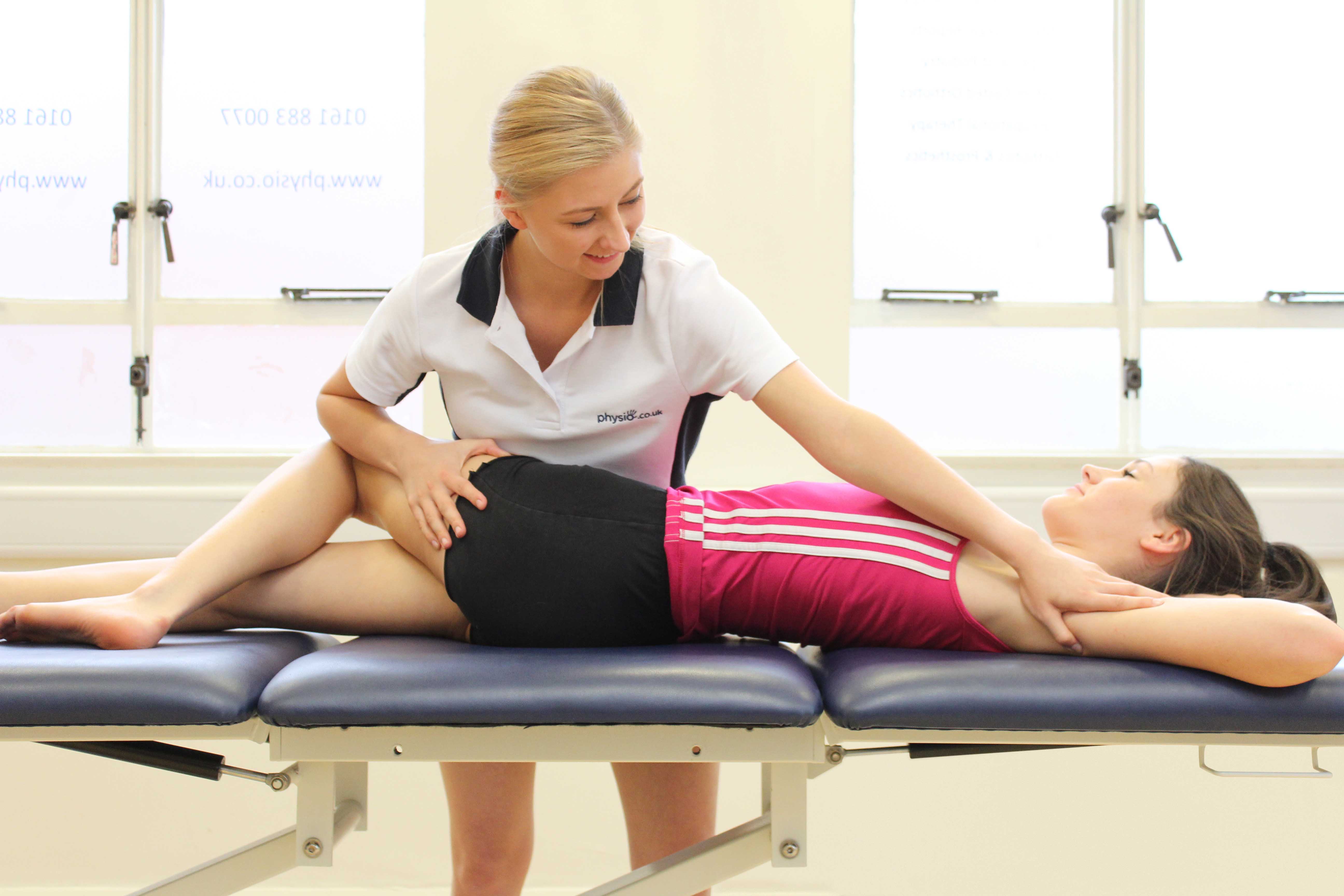What is lymphoedema?
Lymphoedema is a chronic condition which causes the body’s tissue to swell. It normally affects the arms and legs, but can also occur in the genitals, head, and chest.
What causes lymphoedema?
When the lymphatic system becomes damaged or disrupted, lymphoedema occurs. The lymphatic systems function is to drain surplus fluid from tissues. Therefore if this system is not working properly, it is unable to perform this function, causing tissue to swell as a result of the excess fluid. There are two types of lympoedema:
- Primary lymphoedema – this is caused by defective genes and develops either at birth or soon after puberty
- Secondary lymphoedema – this occurs secondary to an injury, trauma, cancer or an infection, which damages the lymphatic system
 Above: Soft tissue massage of the hamstring muscles applied by a massage therapist
Above: Soft tissue massage of the hamstring muscles applied by a massage therapistWhat are the symptoms of lymphoedema?
Symptoms of lymphoedema include:
- Swelling in an area/or areas of the body
- Pain
- Loss of mobility
How can physiotherapy help lymphoedema?
Physiotherapy methods can help improve lymphoedema. Techniques that may be of benefit include:
- Manual Lymphatic Drainage (MLD) – this involves specialist massage techniques which help shift the excess fluid from swollen areas towards lymph nodes where it can be drained
- Exercises – specific strengthening exercises can be provided to target the muscles required in lymph drainage.
Summary
Lymphoedema is a condition which causes the body’s tissue to swell as a result of damage to the lymphatic system. It may be a result of faulty genes or it can be caused secondary to an infection, cancer injury or trauma. Symptoms of lymphoedema include swelling in areas of the body, loss of mobility and pain. Through utilising physiotherapy techniques such as Manual Lymphatic Drainage, and specific strengthening exercises tailored to the needs of the individual, symptoms of lymphoedema can be improved.
For more information or to book an appointment call 0330 088 7800

 0330 088 7800
0330 088 7800


































